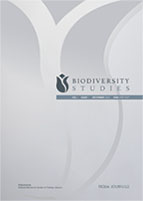Horticultural Studies (HortiS)
2024, Vol 41, Num, 2 (Pages: 074-081)
Determination of Phenolic, Flavonoid Content and Antioxidant Activity of Oil Rose Products
Seda KAYAHAN 1 ,Fatih GÜLBAĞ 1 ,Yalçın KAYA 1 ,Hasret ALTUNKANAT 1
1 Atatürk Horticultural Central Research Institute, 77100, Yalova, Türkiye
DOI :
10.16882/HortiS.1502851
Viewed :
819
-
Downloaded :
365
Rose and rose products are used as raw materials in many sectors including cosmetics, food and medicine. The Rosa damascena Mill. rose genotype, which is intensively cultivated in the Isparta region of Türkiye, is an important export product. The flower of the plant is main source of raw materials for rose oil, herbal teas and cosmetic products due to its high essential oil and polyphenols contents. In this study, Rosa damascena, Rosa centifolia, Rosa alba L., Rosa alba `Semiplena` genotypes were grown in Yalova, which is an alternative region in terms of agro-climatic conditions from Isparta and its surroundings where rose oil cultivation is carried out in Türkiye. Within the scope of the study, total phenolic matter, total antioxidant activity (DPPH and CUPRAC) and total flavonoid contents of flowers (whole flowers), rose water and wastewater of the genotypes were determined. It is important to identify alternative rose genotypes to R. damascena in Türkiye and their potential for cultivation under different climatic conditions. The highest phenolic content (4115 mg gallic acid equivalent GAE 100 g-1) and DPPH antioxidant activity (4893 mg trolox equivalent TE 100 g-1) values were obtained in R. damascena genotype at the first harvest period. The highest CUPRAC antioxidant activity (34237 mg TE 100 g-1) values were obtained in R. centifolia genotype at the first harvest period. In the second harvest period, the highest phenolic content, DPPH antioxidant activity and CUPRAC antioxidant activity values were determined in R. centifolia genotype. Antioxidant activity, phenolic and flavonoid contents of dried rose flowers were higher than in rose water and wastewater. Rose petals were found to have the potential to be used as an important antioxidant source, while total phenolic matter and antioxidant activity values were found to be low in rose water and wastewater. The harvest period was found to be major factor in oil rose flowers, which can be an important polyphenol source.
Keywords :
Antioxidant Essential oil Flavonoid Phenolic content Rose














